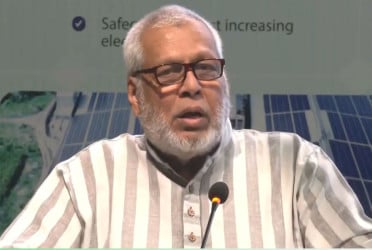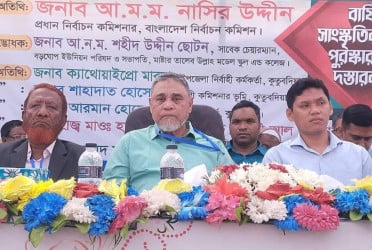Attention deficit hyperactivity disorder, or ADHD, was long thought to be a disorder that only affected children. But now it’s well established that the symptoms can persist into adulthood — and a large new study has assessed which treatments may be most effective at alleviating them.
Stimulant medications, and atomoxetine (a type of antidepressant), were more effective than placebos at reducing core ADHD symptoms during a 12-week period, found the study published Tuesday in the journal Lancet Psychiatry, reports CNN.
Core symptoms of the neurodevelopmental disorder are inattention, hyperactivity and impulsivity, said study author Dr. Samuele Cortese, professor of child and adolescent psychiatry at the University of Southampton in England, in a Tuesday press briefing hosted by the Science Media Centre.
Cortese said about 5% to 7% of children and 2.5% of adults worldwide have ADHD, which stems from underdeveloped or impaired executive function and self-regulation skills, according to Harvard University’s Center on the Developing Child.
Those skills help people plan, focus attention, remember instructions, multitask and more. The symptoms of inattention, hyperactivity and impulsivity mean people with ADHD may have trouble staying organized, concentrating, managing time or controlling impulses, which can affect all areas of life.
A health care provider determines a diagnosis by assessing whether symptoms are persistent, pervasive and inappropriate according to one’s developmental stage, and whether they interfere with a patient’s daily life. The disorder can also be associated with various additional challenges, such as mental or physical conditions, social problems and a higher risk of premature death.
“It’s a serious condition. It’s not a trivial one,” Cortese, also chair of the European ADHD Guidelines Group, said.
“If you look at the current guidelines on the management of ADHD in the UK,” Cortese said, “they recommend medication as the first line. They also mention non-pharmacological treatment if medication is not effective or not well tolerated, but they don’t specify which kind of non-pharmacological treatment. They also mention the possible combination.”
There are still uncertainties about the best treatment for adults with ADHD, Cortese said — so he and the other authors aimed “to provide an updated synthesis of all the evidence available from trials on the pharmacological and nonpharmacological interventions.” The research was done in association with people with lived experience of ADHD, the authors said.
Assessing ADHD treatments
The study is a systematic review and meta-analysis of 113 published and unpublished randomized controlled trials that compared various types of interventions against placebos or other controls for the symptoms of, in total, nearly 14,900 adult participants formally diagnosed with ADHD.
In a short-term period of 12 weeks, in ratings of symptom improvement by both clinicians and patients, only stimulants, such as lisdexamfetamine and methylphenidate, and atomoxetine yielded better results than a placebo.
When it came to the effectiveness of nonpharmacological treatments versus a placebo, there was a mismatch between clinicians’ opinions versus those of the patients themselves. Cognitive behavioral therapy, cognitive remediation, mindfulness, psychoeducation and transcranial direct current stimulation were also more effective than a placebo at reducing patients’ symptoms, but this outcome was reported by clinicians only.
Transcranial direct current stimulation is a noninvasive, painless brain stimulation technique that uses low-intensity electrical currents to stimulate specific parts of the brain.
The authors found several other outcomes, including that medications were more likely than placebos to be discontinued due to adverse events. For emotional dysregulation, which Cortese said many people with ADHD experience, atomoxetine and stimulants were more helpful than a placebo. But for executive function and quality of life, none of the treatments performed differently than a placebo.
Advancing research on adult ADHD
The limitations of the study are due to shortcomings in the literature analyzed for the review, as well as the lack of research on some factors, said clinical psychologist Dr. Margaret Sibley, professor of psychiatry and behavioral sciences at the University of Washington School of Medicine. Sibley wasn’t involved in the study.
However, “non-pharmacological treatments like (cognitive behavioral therapy) are not designed to reduce core symptoms of ADHD, although they sometimes do indirectly,” Sibley said via email. “They are designed to teach coping skills to reduce the impact of symptoms on one’s life. So if the primary outcome in this review had been impairment or ADHD coping skills, or psychological variables like self-worth or self-efficacy or sense of autonomy — you might have seen different findings.”
It’s also likely that differences in effectiveness of treatments simply boil down to the fact that one size doesn’t fit all, Ostinelli said.
Some people with ADHD are apprehensive about taking medication or have experienced side effects they are uncomfortable with, said Dr. Alessio Bellato, a lecturer in child and adolescent mental health at the University of Southampton who wasn’t involved in the study.
“The review also points out a continual challenge when conducting ADHD research with adults,” Sibley added. “Self-perception of ADHD symptoms is fallible in all people. They are somewhat subjective symptoms. However, there are no ‘objective’ tests that can accurately measure ADHD symptoms. Best practice is actually to use informant reports (i.e., reports of loved ones) in combination with self-report when assessing adult ADHD.”
All considered, because people with ADHD usually seek treatment with the hope of improving more than just core symptoms, best practice in adult ADHD treatment typically includes both pharmacological and non-pharmacological care, Sibley said.
Bd-pratidin English/Fariha Nowshin Chinika





































































